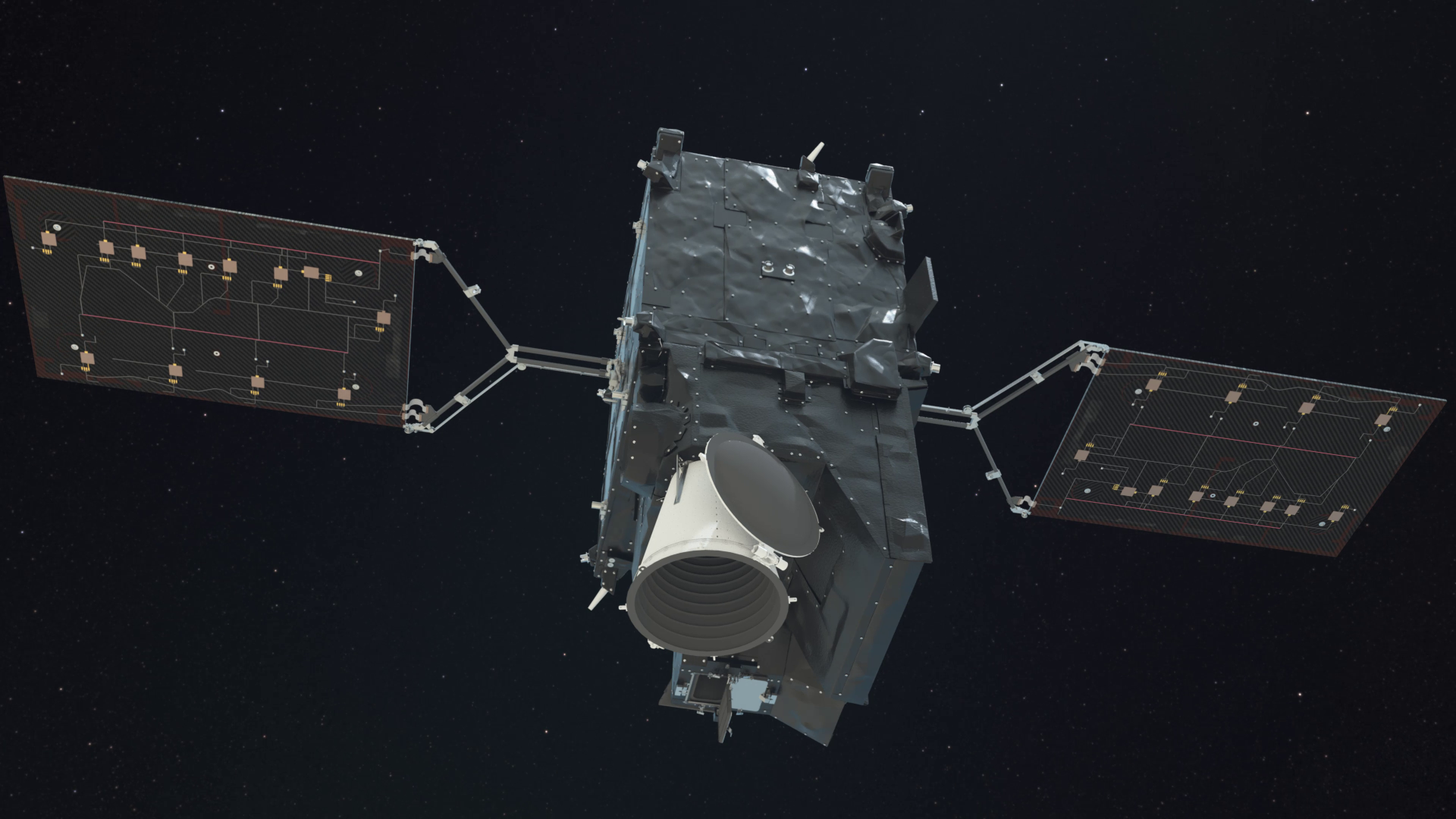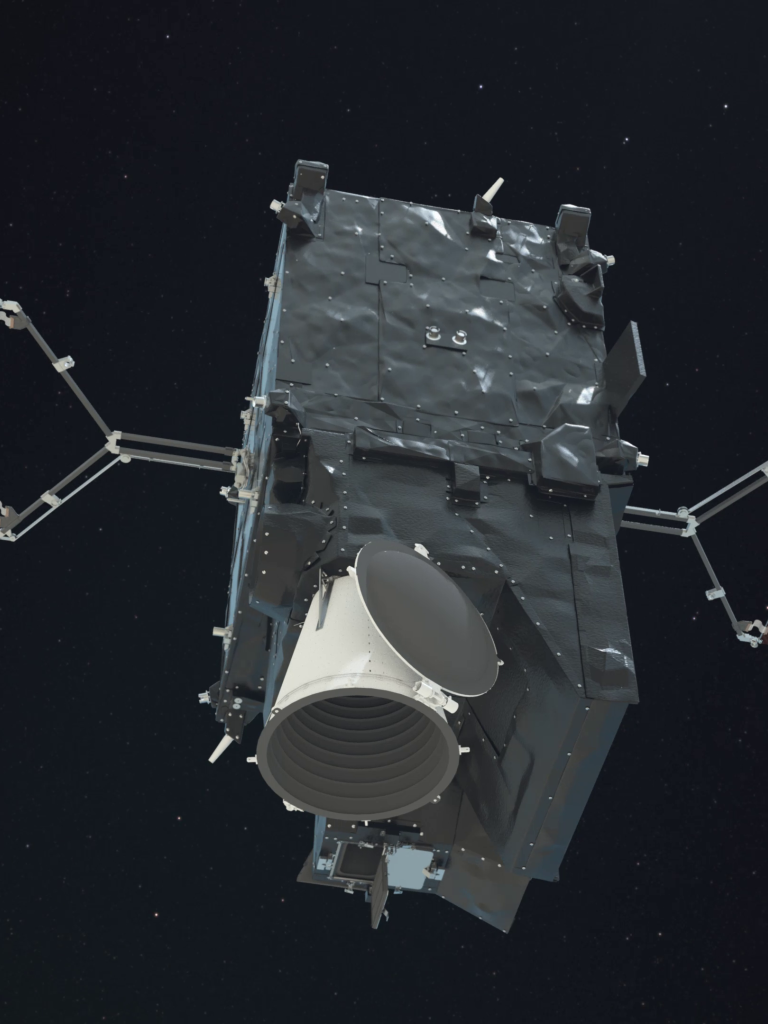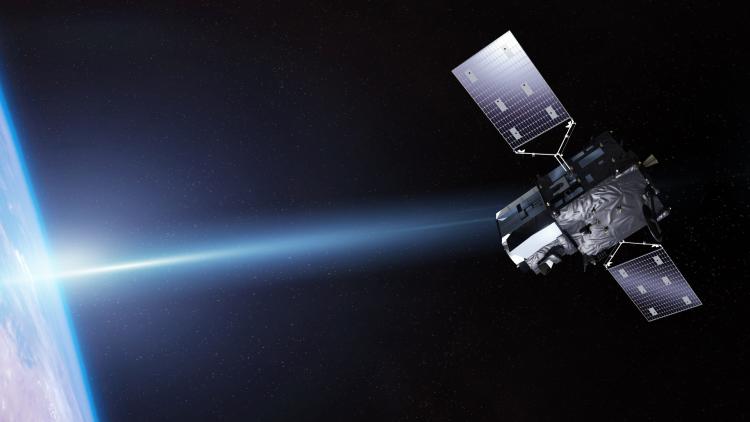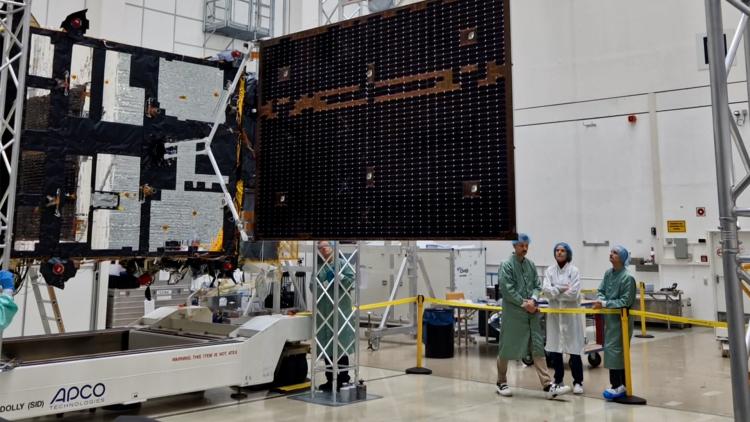
Meteosat Third Generation Sounder 1 travels into orbit
Following the successful launch, the satellite still has a formidable journey ahead to its destination 36,000km above the Equator


EUMETSAT’s Julia Hunter-Anderson describes the satellite’s journey and reflects on the Launch and Early Operations Phase of the previous satellite in this series.
Credit: Milan Klinc
Let’s start off simply: what is a LEOP?
The LEOP is the phase from the injection of the spacecraft into orbit by the launch vehicle until it reaches the commissioning slot on the geostationary ring. Fundamentally, it is a series of manoeuvres to bring the satellite to that position and all the complexity that goes into performing those manoeuvres.
Who is responsible for this LEOP?
We have a team of about 130 people working on the LEOP. Sixty-five of those are from Telespazio and they're based in Italy – in Fucino and Rome. And then everybody else is from OHB, Thales Alenia Space France, the European Space Agency and EUMETSAT. During the LEOP, we all work from the Telespazio Mission Control Centre in Fucino, Italy.
How is this LEOP different from the first satellite launched in the MTG series, Meteosat Third Generation Imager 1 (MTG-I1), now known as Meteosat-12?
One main difference between this LEOP and the previous one, for MTG-I1, is the injection orbit, which is the initial orbit the satellite enters after launch. The closest point in the orbit from the Earth is called the perigee and the furthest point is called the apogee. For MTG-I1, the spacecraft was injected into a standard geostationary transfer orbit, with perigee of about 250km and apogee of just under 36,000km, inclined at about six degrees to the Equator. The injection orbit for this satellite, MTG-S1, is a super synchronous transfer orbit, which has an apogee of about 65,000km and a perigee of about 300km and is inclined at about 21 degrees to the equator.
What this means is that the orbit is a very stretched ellipse, or oval, with the Earth offset so that it is further from one end of the ellipse than the other. So, this very different injection orbit from the LEOP for the first MTG satellite, MTG-I1, means we have to do more manoeuvres to get the satellite to its orbital slot – not only what we call perigee-raising manoeuvres but also apogee-lowering manoeuvres.
How long will the LEOP last?
The LEOP will last at least 17 days, which is fairly long compared with the 11 days for a standard geostationary transfer orbit. That is because we need enough time to complete all the necessary manoeuvres.
Let’s talk through the main steps in the LEOP. What happened during launch?
On launch day, we were all on console, which are our mission control centre work stations. Throughout the LEOP, most teams work in three shifts, so we can cover 24/7 operations. We started in the late morning on the day of the launch, when the spacecraft was being prepared for the launch. The satellite went through certain configuration changes and checks. We listened in from the Mission Control Centre in Fucino, while the satellite was on the launcher. This allowed us to confirm that the spacecraft was in the configuration expected by the LEOP team. In addition, we mirrored the configuration of the satellite’s on-board software into the LEOP control system. This way, if further down the line we have to do an onboard software patch, we can be sure we have the right starting point.
When that was all taken care of, we had the final countdown before launch, which we participated in. The team responsible for the launcher and launch site, the team responsible for the spacecraft configuration and health, and our team at the LEOP site all reported a “Go” to the Launch Mission Manager, so the launch could proceed. Even one “No-Go” would have made this not possible, so luckily everything was good to move forward. After that, there was liftoff.
What happened next?
About half an hour later, just before the satellite separated from the launcher, we received the first signal from the spacecraft. These signals, which allow us to check the health status of the satellite, are transmitted via radio frequency from the spacecraft to our network of seven ground stations across the world. The first signal came through our station in Malindi, Kenya. After that, the satellite separated from the launcher. A live feed provided us with a video of the separation, which is really useful and something we did not have for the previous launch.
Then, the spacecraft detected that it had separated from the launcher and triggered what is called an automated separation sequence, where it runs through a series of operations that bring the systems online that were dormant during the launch. This includes pressurising the propulsion system, which enables the satellite to perform manoeuvres.
Then what?
Next was a really key step: at the end of that separation sequence, the solar panels, which until then had been folded up, were deployed and the satellite oriented itself to have sufficient sun on the panels. When that happened, we were what we call power positive, which means the satellite is able to generate enough power to keep key units alive. It is essential that enough power comes through the solar panels to supply energy to the satellite units. So, once the satellite was power positive, we could finally start to draw some breath.
Then we confirmed that the solar panels were locked into place. They need to be locked in order for us to do an orbit manoeuvre, so this was another very important operation. After that, we prepared various special units including gyroscopes and reaction wheels that we use for orienting the satellite – what we call attitude pointing.
A large part of the LEOP involved performing orbit manoeuvres, which move the satellite, step-by-step, into the correct orbital altitude and inclination. For MTG-S1 this meant doing three perigee-raising manoeuvres performed over a few orbits followed by two apogee-lowering manoeuvres. This used a powerful engine to complete what we call the transfer orbit phase, which covers a series of intermediate orbits from the launcher injection orbit up to a nearly circular orbit close to our target altitude on the geostationary ring.
And when the satellite has the right orbit, how do you get it into the target slot within the ring of geostationary satellites?
The satellite needs to get to a position above the Equator at a longitude of 3.4°W. So, at this point in the process, we do a number of drift manoeuvres, which is what we are doing now. Along the way, we also remove pressure in the form of extra helium from the pressurant tanks and fuel from the pipes and large engine. This is done because they are no longer needed after the big manoeuvres and to avoid the risk of a leakage that could impact the orbit in the future. From that point on, including during the commissioning and routine operations phases, we use small thrusters to manoeuvre the satellite.
We also deploy what's called the Ka-band antenna, which is the antenna that will send down all the meteorological data once the payload instruments are switched on. During this time, we are drifting slightly above the geostationary ring, and then we insert the satellite into its little slot by performing a couple more manoeuvres. Once we are there, we turn the spacecraft and the instruments towards the Earth and switch to a fine-pointing mode. The final day involves tests and checks to demonstrate that EUMETSAT is ready to take over the satellite operations from the LEOP service provider, and checking that the configuration and location of the spacecraft is as expected. And that’s pretty much it!
How did your team’s experience from the previous LEOP inform your work on this one?
LEOPs are governed by procedures and rules to try to avoid us having to make very tricky decisions under high pressure. Therefore, the whole team is involved in an intense period of training using simulations in order to react well together as one team in case of contingencies. But as much as we prepare – and we prepare a lot – inevitably, we cannot anticipate everything that might go wrong. We ran into a number of difficulties during the previous LEOP, and were able to recover from each of them in a controlled way, which demonstrated to us the value of doing all of this intense preparation work beforehand.
How do you expect to feel in a few days when the LEOP has finished?
Ecstatic. It will be the culmination of the work of hundreds of people over many years. Of course, it is just the start of another long journey for the EUMETSAT team together with the European Space Agency and industry to commission the satellite, which is when the exciting new instruments and ground-based processing system are prepared to deliver data and products to our end user community. But the end of the LEOP will be when we will have done our job and, hopefully, will have set the next team up for more success to come.
Author:
Sarah Puschmann


